#Best Marketing Company For Manufacturing Industry
Text
Elevate Your Manufacturing Marketing with Osumare: Leading the Way in Pune
In the bustling industrial hub of Pune, where manufacturing companies strive to innovate and excel, digital marketing has emerged as a powerful tool for driving growth and success. As manufacturing companies seek to expand their reach, attract new customers, and stay ahead of the competition, partnering with a trusted digital marketing agency is essential. Enter Osumare – the premier digital marketing company for manufacturing companies in Pune, dedicated to helping businesses harness the power of digital channels to achieve their marketing goals effectively.
Understanding the Importance of Digital Marketing for Manufacturing Companies
In today's digital age, having a strong online presence is critical for manufacturing companies looking to connect with customers, suppliers, and stakeholders. Digital marketing offers a range of opportunities for manufacturing companies to showcase their products, communicate their brand values, and engage with their target audience. From website development and search engine optimization to content marketing and social media advertising, digital marketing enables manufacturing companies to reach and influence potential customers across various channels.
Why Choose Osumare for Manufacturing Digital Marketing
At Osumare, we specialize in helping manufacturing companies navigate the complexities of digital marketing and leverage the power of digital channels to drive business growth. With years of experience in the manufacturing industry and a team of skilled professionals, we offer tailored solutions designed to address the unique needs and challenges of manufacturing marketing. Whether you're looking to increase brand awareness, generate leads, or drive sales, we have the expertise and resources to help you achieve your marketing objectives.
Tailored Strategies for Manufacturing Marketing Success
We understand that every manufacturing company is unique, with its own goals, target audience, and industry dynamics. That's why we take a customized approach to digital marketing, developing strategies that are tailored to your specific needs and objectives. Whether you specialize in automotive manufacturing, industrial equipment, or consumer goods, we work closely with you to create a comprehensive digital marketing plan that aligns with your business goals and drives results.
Comprehensive Digital Marketing Services
Our range of digital marketing services for manufacturing companies covers every aspect of online marketing, from strategy development and implementation to ongoing optimization and performance tracking. From website design and development to search engine optimization (SEO), pay-per-click (PPC) advertising, and social media management, we offer a full suite of services to help you reach your target audience and achieve your marketing goals. Our team utilizes advanced tools and techniques to ensure that your digital marketing campaigns are effective, efficient, and impactful.
Client Success Stories
But don't just take our word for it – hear from some of our satisfied clients who have experienced firsthand the transformative impact of partnering with Osumare. From increased website traffic and lead generation to improved brand visibility and customer engagement, our clients have achieved remarkable results with our digital marketing services for manufacturing companies in Pune and beyond.
Conclusion: Choose Osumare for Your Manufacturing Digital Marketing Needs
If you're looking to elevate your manufacturing marketing efforts in Pune, Osumare is your trusted partner. With our tailored strategies, comprehensive services, and industry expertise, we help manufacturing companies build a strong digital presence and achieve their marketing objectives effectively. Visit Osumare's Best Digital Marketing Company for Manufacturing Companies in Pune to learn more about how we can help you succeed in the competitive manufacturing landscape.
0 notes
Text
Best Automotive Parts Manufacturer
Metalman Auto Ltd. is recognized as one of the best automotive parts manufacturers in the industry, delivering high-quality metal components for a wide range of vehicles, including two-wheelers, three-wheelers, passenger vehicles, commercial vehicles, and off-highway vehicles. With state-of-the-art manufacturing facilities, we specialize in sheet metal fabrication, tubular fabrication, and precision metal finishing, ensuring that every product meets the highest standards of quality and durability. Our commitment to innovation and excellence has earned us a strong reputation among OEMs (Original Equipment Manufacturers) and in the aftermarket industry. We pride ourselves on our ability to adapt to the evolving needs of the automotive sector, offering custom solutions for electric vehicles (EVs) and sustainable mobility. Whether you need body panels, chassis components, or other critical parts, Metalman Auto delivers products that enhance the performance and longevity of your vehicles. Choose Metalman Auto for unparalleled expertise, quality, and customer service in automotive component manufacturing.

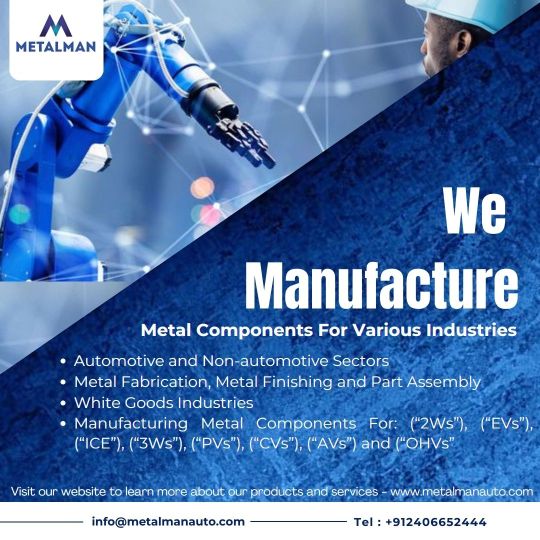
#electric vehicles#metal fabrication#fabricationservices#oemparts#steel fabrication#supplier#oem manufacturing#manufacturer#stainless steel#vehicle transport#transportation#transport for london#ipo news#ipo alert#transport technology#transport service#stocks#business magazines#business standard#manufacturing#automotive parts#High-Volume Automotive Parts Manufacturing#markets#metalman auto#automotive industry#parts Manufacturin#automotive#car accessories#best company
0 notes
Text
Best CRM Software in India for Maximum Business Growth

Looking for the best CRM software in India to accelerate the growth of your company? For you, Intileo Technologies provides the ideal answer! You may track sales, manage customer connections, and enhance client communication with the help of our CRM software. It's intended to simplify and enhance the effectiveness of your company's operations, enabling you to expand more quickly. Our CRM software is designed to fit your demands, regardless of the size of your company. It's the best way to keep ahead of the competition with features like lead management, sales tracking, and customer assistance. The best CRM software in India is provided by Intileo Technologies, guaranteeing maximum business success and growth.
#customer relation management#crm management software#real estate crm software#marketing crm#crm software india#crm for travel industry#best crm software in india#best crm software for small business#best crm in india#crm company in india#crm for schools#insurance crm software#logistics crm#crm for ecommerce#crm for travel companies#crm for retail#education crm software#crm for marketing agencies#best crm for manufacturing business#retail crm software
0 notes
Text
Top Blanched Peanuts Exporter and Supplier in India: JRP Impex

When it comes to sourcing high-quality blanched peanuts, JRP Impex stands out as a leading exporter and supplier in India. Known for its commitment to excellence and unmatched product quality, JRP Impex has established itself as a top player in the global market. Let’s explore why JRP Impex is the preferred choice for blanched peanuts and how their offerings can benefit businesses worldwide.
Uncompromised Quality
At JRP Impex, quality is a top priority. The company meticulously selects the finest peanuts and employs advanced blanching techniques to ensure the final product meets stringent quality standards. Blanching, which involves removing the skin from peanuts, not only enhances their taste and texture but also ensures they are free from impurities. This careful processing guarantees that JRP Impex’s blanched peanuts are of superior quality, making them ideal for a variety of culinary applications.
Extensive Product Range
JRP Impex offers a diverse range of blanched peanuts to cater to different customer needs. Whether you require blanched peanuts for snacks, confectionery, or other food products, JRP Impex has you covered. Their product range includes various sizes and cuts of blanched peanuts, allowing customers to choose the product that best suits their specific requirements. This flexibility in product offerings makes JRP Impex a one-stop shop for all blanched peanut needs.
Commitment to Hygiene and Safety
Food safety and hygiene are critical considerations for any food product, and JRP Impex takes these aspects very seriously. The company adheres to strict hygiene standards throughout the production process. From handling and processing to packaging and delivery, JRP Impex ensures that every step is executed with the utmost care. This commitment to safety not only guarantees the quality of their blanched peanuts but also provides peace of mind to customers.
Global Reach and Reliability
As a prominent exporter, JRP Impex has built a reputation for reliability and timely delivery. The company’s global network allows it to serve clients across various countries efficiently. By maintaining a robust supply chain and logistical framework, JRP Impex ensures that customers receive their orders promptly and in excellent condition. This reliability has earned the company a strong reputation among international buyers.
Sustainability Initiatives
In addition to its focus on quality and customer satisfaction, JRP Impex is committed to sustainability. The company adopts environmentally friendly practices in its operations, from sourcing raw materials to minimizing waste. By investing in sustainable practices, JRP Impex not only contributes to environmental conservation but also supports the long-term viability of the peanut supply chain.
Customer-Centric Approach
JRP Impex’s success can be attributed to its customer-centric approach. The company works closely with its clients to understand their specific needs and provide tailored solutions. Whether it’s customizing product specifications or offering flexible packaging options, JRP Impex is dedicated to delivering exceptional service. This personalized approach has helped the company build strong relationships with customers and gain their trust.
Conclusion
In summary, JRP Impex is a top blanched peanuts exporter and supplier in India, renowned for its high-quality products, commitment to hygiene, global reach, and sustainable practices. By choosing JRP Impex, businesses can access premium blanched peanuts that meet the highest standards of quality and safety. With its extensive product range and customer-focused approach, JRP Impex continues to be a preferred partner for blanched peanuts in the global market.
#Best blanched peanuts exporter in India#Top supplier of blanched peanuts India#Blanched peanuts for export from India#Quality blanched peanuts supplier India#Leading blanched peanuts exporter India#Blanched peanut suppliers in India#Blanched peanuts export company India#Buy blanched peanuts from India#Blanched peanut supplier for export#Premium blanched peanuts India#Blanched peanuts wholesale India#Indian blanched peanuts exporter#Blanched peanuts export rates India#Top blanched peanut manufacturer India#Reliable blanched peanuts exporter India#Blanched peanuts for food industry#Blanched peanuts supplier for global markets#Blanched peanuts sourcing from India#Export quality blanched peanuts India#Blanched peanuts for international trade#Best blanched peanuts supplier for importers#Blanched peanuts bulk supplier India#Blanched peanuts supplier with competitive pricing#Blanched peanuts for export markets#Top-rated blanched peanuts exporter India#Blanched peanut exporter for bulk orders#High-quality blanched peanuts supplier India#Indian supplier of blanched peanuts#Blanched peanuts for commercial use#Blanched peanuts for food processing
0 notes
Text
Why Thummars is the Premier Sesame Seeds Manufacturer and Supplier in India

In the bustling world of agricultural exports, sesame seeds stand out for their versatility and nutritional benefits. Among the top players in this market, Thummars has established itself as a leading sesame seeds manufacturer and supplier in India. With a commitment to quality and a robust supply chain, Thummars delivers sesame seeds that cater to both domestic and international markets.
The Nutritional Powerhouse: Sesame Seeds
Sesame seeds, often referred to as the "king of seeds," are packed with essential nutrients. They are a rich source of healthy fats, proteins, and minerals like calcium, magnesium, and iron. Their high antioxidant content also helps in reducing inflammation and improving overall health. The demand for sesame seeds has been steadily rising due to their inclusion in various culinary and health products.
Why Choose Thummars for Sesame Seeds?
1. Exceptional Quality
Thummars takes pride in its stringent quality control processes. From the sourcing of raw seeds to the final packaging, every step is meticulously managed to ensure that only the best sesame seeds reach the market. The company employs advanced cleaning and sorting technologies to remove impurities and deliver seeds that are consistent in size, color, and quality.
2. Sustainable Farming Practices
Sustainability is at the heart of Thummars’ operations. The company works closely with farmers to promote sustainable farming practices. By encouraging the use of organic fertilizers and crop rotation techniques, Thummars helps in maintaining soil health and reducing environmental impact. This approach not only supports the environment but also ensures the production of high-quality sesame seeds.
3. Comprehensive Range of Products
Thummars offers a diverse range of sesame seed products to meet various market needs. Their product line includes raw sesame seeds, hulled sesame seeds, and roasted sesame seeds. Each type undergoes rigorous testing to ensure it meets the highest standards. Whether for use in bakery products, snacks, or as an ingredient in international cuisines, Thummars provides sesame seeds that cater to a wide array of applications.
4. Reliable Supply Chain
In the global market, timely delivery and reliable supply are crucial. Thummars has built a robust supply chain that ensures prompt and efficient distribution of sesame seeds. The company’s strategic logistics and warehousing capabilities enable it to handle bulk orders and manage inventory effectively, thus minimizing delays and ensuring customer satisfaction.
5. Competitive Pricing
Despite its premium quality, Thummars maintains competitive pricing. The company's efficient production processes and supply chain management help in keeping costs down. This allows Thummars to offer high-quality sesame seeds at prices that are attractive to both domestic and international buyers.
6. Commitment to Customer Satisfaction
Customer satisfaction is a core value at Thummars. The company focuses on building long-term relationships with its clients by providing exceptional service and support. Thummars’ dedicated customer service team is always ready to address inquiries, provide product information, and assist with order processing.
Conclusion
For those seeking a reliable and high-quality supplier of sesame seeds, Thummars stands out as a top choice in India. With its focus on quality, sustainability, and customer satisfaction, Thummars has earned a reputation as a leading sesame seeds manufacturer and supplier. By choosing Thummars, you are not just investing in premium sesame seeds but also supporting a company that is committed to excellence and sustainability in every aspect of its operations.
#Best sesame seeds manufacturer in India#Top sesame seeds suppliers in India#Sesame seeds export suppliers from India#Premium quality sesame seeds manufacturer India#Organic sesame seeds suppliers India#Bulk sesame seeds supplier India#Sesame seeds for baking manufacturer India#Hulled sesame seeds supplier in India#Raw sesame seeds export India#Wholesale sesame seeds suppliers in India#Sesame seeds processing company India#Sesame seeds importers and exporters in India#Sesame seeds supplier for health food products India#High-quality sesame seeds for export from India#Sesame seeds for snacks manufacturers India#Industrial sesame seeds suppliers in India#Indian sesame seeds for culinary use#Bulk purchase of sesame seeds from India#Sesame seeds sourcing and supply India#Sesame seeds supplier for retail market India
1 note
·
View note
Text

🔥 20+ Awesome Demos For Only $13 😱
Get the multi-purpose business WordPress theme
Industrie is built with 20+ awesome demos and these domes are designed and developed specifically for Industry, Factory, Metallurgy, Construction, Laboratory, Renewable Energy, Oil & Gas, Robotic, Architecture, and Manufacturing.
These demos are suitable for any business website. It is also ideal for construction company websites.
-Unlock Your WordPress Game with Industrie
Grab the advanced premium theme, for a limited time.
#IndustrieWpTheme #wordpress #wordpressthemes #Industry #Factory #Metallurgy #Construction #Laboratory #RenewableEnergy #OilAndGas #Robotic #Architecture #Manufacturing #IndustrialDesign #EngineeringSolution #InnovativeTechnology #Productivity #Efficiency #Digitalization #Automation #IndustrialRevolution #SustainableDevelopment
#premium wordpress themes#paid wordpress themes#wordpress premium themes#consulting business wordpress theme#premium wordpress theme#app landing wordpress theme#education & online course wordpress theme#education wordpress theme#online learning wordpress theme#wordpress plugins#insdustry#factory#factorio#industrial#industry survey#web developing company#best digital marketing company#manufacturing#industry#manufacturer#good smile company#digital marketing company#limbus company#lethal company#seo company#services#bangalore
1 note
·
View note
Text
Top seating system manufacturers in India
VINAR SYSTEM PRIVATE LIMITED is a best seating system manufacturer in India, renowned for its excellence. Based in Kolkata, the company is a prominent player in the industry, excelling as a manufacturer, distributor, and marketer of top-quality Storage Solutions, Mobile Compactors, Office Furniture, and Chairs. Their address at 2/20, Ansari Road, Daryaganj, New Delhi, Delhi 110002, reflects their commitment to delivering exceptional products across the nation.
#VINAR SYSTEM PRIVATE LIMITED is a best seating system manufacturer in India#renowned for its excellence. Based in Kolkata#the company is a prominent player in the industry#excelling as a manufacturer#distributor#and marketer of top-quality Storage Solutions#Mobile Compactors#Office Furniture#and Chairs. Their address at 2/20#Ansari Road#Daryaganj#New Delhi#Delhi 110002#reflects their commitment to delivering exceptional products across the nation.
0 notes
Text
Everyone gets “The 90s” look wrong and I hate it

Couple years ago I saw these two board games at the store back to back. Well, not saw them per se, but ya know. Spied them out of the corner of my eye. And for a moment without reading the text, I couldn’t tell you which was which decade at first. Funny. Either they were in a rush to get these out the door or they wanted their throwback trivia game boxes to look uniform. I didn’t think too much of it.
Only, from then on I started seeing it MORE. Every time someone markets a 90s or 80s throwback...




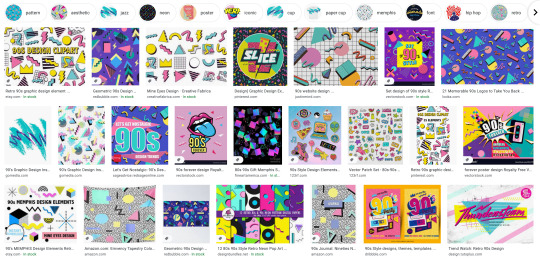
Goddammit they’re identical! What??! How did we let this happen? As a 90s survivor and a designer, this drives me up a wall.
Look, I know I’m late to the party to complain about “the 90s look” when we’re just starting to get sick of the Y2K nostalgia train. But c’mon, the 90s were not The 80s: Part Two™
Trust me when I say that we weren’t all wearing neon trapezoids up until the year 2000. The 90s look being peddled is so specific to the tail end of the 80s and an early early part of the 90s - a part of the 90s when it wouldn’t stop being the 80s. This is Memphis design being conflated with the wrong decade.
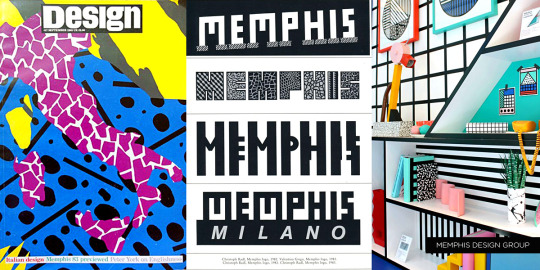

Keep reading for a long ass graphic design history lesson and pictures of old soda and fast food.

Specifically, the look is Memphis Milano, self-named by the Italian design house Memphis Group. Starting in the early to mid 80s, they made all sorts of furniture, fabrics and sculptures that were like a Piet Mondrian grid painting under heavy radiation. Their whole deal was defying the standards of existing industrial design up to that point on purpose. Chairs had weird arches, bookcases would be in strange alien colors, unusual materials like plastic or elastic were used in place of metal or wood, that sorta thing.

Memphis quickly became the signature look for the decade. You can tell something’s influenced by Memphis design from it’s telltale trademarks:
Clashing, neon colors.
Use of diametric shapes.
Contrasting patterns like zebra print stripes, confetti squiggles and checkerboards.
It wasn’t long before Memphis Milano-inspired design was everywhere in 80s pop culture:







It was a special time, yes.
I was a kindergartener at the tail end of the 80s, so I knew Memphis mostly through the lens of kids media. Toys, clothes, games, tv shows used it like candy colored catnip. Cable channel Nickelodeon more or less adopted the Memphis aesthetic as their signature in-house style and practically built a monument to it at a Florida theme park:
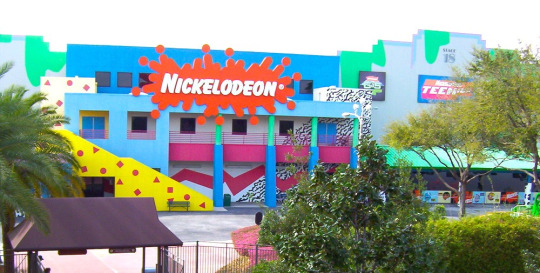
I think this is why folks mistake what decade Memphis is representative of - 90s staples like Nick, Saved By The Bell, Fresh Prince - they all stayed around much longer than the design trend’s expiration date.



Couple that notion with the fact that companies are slow followers to design trends. Something gets popular and they want to get on the bandwagon? Gotta wait for the ink to dry, gotta wait for the production molds to be made. It would take a few years for them to completely work Memphis outta their system.



Now, this is not to say Memphis is bad! Personally I’m a fan of the aesthetic, if my neon-drenched artwork wasn’t a tip-off already. But it is a trend, and trends never last forever.
So what took the Memphis Milano look down for good? This part’s up for debate, but I personally think it had something to do with this dude:

It’s that grunge music from Seattle that’s so popular with the kids these days dontchaknow.
Once Smells Like Teen Spirit hit in 1991, the Nirvana tone drove the rest of the decade. Clean geometry became weathered, grainy and organic. Bright neon pastels became more bold. Bubblegum pop music sounded fake and manufactured. Attitude and apathy was authentic. Whatever.
Things got grungy. Things got grimy. Olestra was invented.

I think the best way to visualize this transition is how Cherry Coke entered the decade and how it left it:
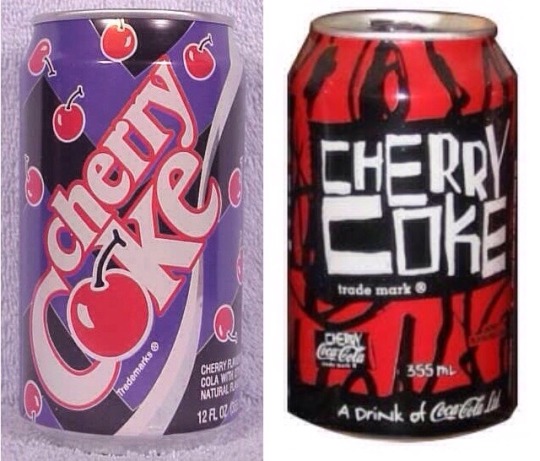
1992 Memphis on the left, 1998 grunge junkie on the right. Fitting that the 90s would end with a design that looked like Darth Maul’s lungs.
Okay, so what should 90s retro design look like?
Continue on to PART TWO! Spoilers: No VHS filters or vaporwave needed, but maybe bring an antacid.
16K notes
·
View notes
Text
#JH BIO -Leading chinese multinational manufacturer and distributor of feed ingredients with years of experience in the animal nutrition#feed industries of worldwide. Being a biotecnology company has not only taught us to focus on supplying the best products#but also to offer a dedicated and sincere service at all times to our customers. From product quality and safety#with an understanding of pricing according to market conditions and trends#to global delivery service and on-time transportation.
1 note
·
View note
Text
Researching herbicide resistance in weeds.
A decade ago, everyone said rotating applications of different herbicides was key to stopping herbicide resistance.
Then, around 2015, evidence from a large study emerged saying that this actually causes weeds to be MORE resistant, so the best thing to do is to spray a combination of multiple herbicides mixed together at once.
Now that is being called into question too. Whoda thunk it...
Herbicide resistance among weeds is only getting stronger. Recently, scientists found an annual bluegrass (Poa annua) on a golf course that was resistant to seven herbicide modes of action at once. Seven. SEVEN. Amaranth plants been found with resistance to six herbicide modes of action at once. Twenty years ago, the narrative was that resistance to glyphosate (Roundup) was unlikely to become widespread; today it's the second-most common type of resistance.
What's more, plants are developing types of herbicide resistance that are effective against multiple herbicides at once and harder to detect. Instead of changing the chemical processes within them that are affected by the herbicides so the herbicides don't work as well, they're changing the way they absorb chemicals in the first place. Resistant plants are producing enzymes that detoxify the herbicides before they even enter the plants' cells.
It took Monsanto ten years to develop crop varieties resistant to Dicamba (after weeds made 'Roundup Ready' crops pointless). Palmer amaranth evolved Dicamba resistance in five years.
So I asked, "Why are all the proposed solutions dependent on using more herbicides, when we know damn well that this is going to do nothing but make the weeds evolve faster?"
The answer is that chemical companies have the world in a death grip. They can't make money off non-chemical solutions, so chemical solutions get all the funding, research, and outreach to farmers.
But why do chemical companies have so much power?
One of the biggest reasons is the U.S. military.
In the Vietnam war, all of Vietnam was sprayed with toxic herbicides like Agent Orange, which was incredibly toxic to humans and affected the Vietnamese population with horrible illnesses and birth defects. Monsanto, the company that made the herbicides, knew that it did this, but didn't tell anyone. The US government didn't admit that they'd poisoned humans on a mass scale until Vietnam veterans started dying and coming down with horrible illnesses, and even then, it took them 40 years. (My Papaw died at 60 because of that stuff.) And the soldiers weren't there for very long. As for the Vietnamese people, the soil and water where they live is contaminated.
Similarly, during the "war on drugs," the US military sprayed Roundup and other chemicals on fields to destroy coca plants and other plants used in the manufacturing of drugs. This killed a lot of crops that farmers needed to live, and caused major health problems in places such as Columbia. The US government said that people getting sick were lying and that Roundup was just as safe as table salt. (A statement that did not age well.)
So chemical companies make money off arming the USA military. The American lawn care industry, and the agricultural system, therefore originates in more than one way from the United States's war-mongering.
The other major way is described in this article (which I highly recommend), which describes how after WW2, chemical plants used for manufacturing explosives were changed into fertilizer producing plants, but chemical companies couldn't market all that fertilizer to farmers, so they invented the lawn care industry. No exaggeration, that's literally what happened.
This really changes my perspective on all the writings about fixing the agricultural system. The resources are biased towards the use of chemicals in agriculture because the companies are so powerful as to make outreach and research for non-chemical methods of agriculture really hard to fund. All the funding is in finding new ways to spray chemicals or spraying slightly different chemicals, because that's what you can actually get ahold of money to look into. It is like the research has to negotiate a truce with the chemical companies, suggesting only solutions that won't cause lower profits.
Meanwhile my respect for Amaranth is skyrocketing.
Who would win: The USA military-industrial complex or one leafy boi
4K notes
·
View notes
Text
Millions of solar panels are piling up in warehouses across the Continent because of a manufacturing battle in China, where cut-throat competition has driven the world’s biggest panel-makers to expand production far faster than they can be installed.
The supply glut has caused solar panel prices to halve. This sounds like great news for the EU, which recently pledged to triple its solar power capacity to 672 gigawatts by 2030. That’s roughly equivalent to 200 large nuclear power stations.
In reality, though, it has caused a crisis. Under the EU’s “Green Deal Industrial Plan”, 40pc of the panels to be spread across European fields and roofs were meant to be made by European manufacturers.
However, the influx of cheap Chinese alternatives means that instead of tooling up, manufacturers are pulling out of the market or becoming insolvent. Last year 97pc of the solar panels installed across Europe came from China.[...]
The best estimates suggest that about 90 gigawatts worth of solar panels are stashed around Europe. That solar power capacity roughly equates to 25 large nuclear power stations the size of Hinkley Point C.[...]
The sheer scale of the problem was revealed in a recent report from the International Energy Agency (IEA).
It warned that although the world was installing at record rates of around 400 gigawatts a year, manufacturing capacity was growing far faster.
By the end of this year solar panel factories, mostly in China, will be capable of churning out 1,100 gigawatts a year – nearly three times more than the world is ready [sic] for. For comparison, that’s about 11 times [!!!!] the UK’s entire generating capacity.
For some solar power installers, it’s a dream come true. Sagar Adani is building solar farms across India’s deserts, with 54 in operation and another 12 being built.
His company, Adani Green Energy, is constructing one solar farm so large that it will cover an area five times the size of Paris and have a capacity of 30 gigawatts – equal to a third of the UK’s entire generating capacity.
“I am installing tens of millions of solar panels across these projects,” says Adani. “Almost all of them will have been imported from China. There is nowhere else that can supply them in such numbers or at such prices.
“China saw the opportunity before others, it looked forward to what the world is going to set up 10 years on. And because they scaled up in the way they did, they were able to reduce costs substantially as well.”
That scaling up meant the capital cost of installing solar power fell from around £1.25m per megawatt of generating capacity in 2015 to around £600,000 today – a decrease of more than 50pc – making it cheaper than almost any other form of generation, including wind.[...]
“Up to 2012 there was a healthy looking European solar panel industry but it was actually very reliant on subsidies and preferential treatment.
“But then European governments and other customers started buying from China because their products were so much cheaper. And China still has cheap labour and cheap energy plus a massive domestic market. It’s hard to see Europe recovering from those disadvantages.”
Trying sososo hard to make this sound like a bad thing [23 Mar 24]
#sowwy ur nationalistic fever dream got outcompeted#free market innit#now shut up and install the fucking panels#shocking revelation: combatting a global problem isnt most efficiently done through local solutions#'we cant install that many' yeah you can lol#wheres that 'become an accompished scientist' meme
467 notes
·
View notes
Text
Top CRM Software India for Marketing Professionals
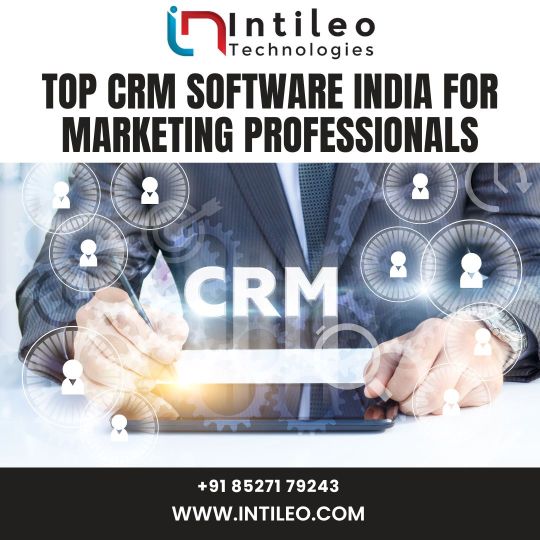
Are you trying to find the best CRM software for marketing professionals in India? The best CRM software India is offered by Intileo Technologies, which will help you improve your marketing strategies. Our CRM software is made to collect leads, manage customer relationships effectively, and optimize your marketing initiatives. You get a strong tool with Intileo Technologies that breaks down the complexity of client management, facilitating data analysis, interaction tracking, and increased marketing effectiveness. Select the best CRM software India from Intileo Technologies, and see an immediate boost in your marketing ROI. Our feature-rich and easy-to-use CRM software is the ideal choice for marketing professionals looking to expand their client base and meet their objectives.
#customer relation management#crm management software#real estate crm software#marketing crm#crm software india#crm for travel industry#best crm software in india#best crm software for small business#best crm in india#crm company in india#crm for schools#insurance crm software#logistics crm#crm for ecommerce#crm for travel companies#crm for retail#education crm software#crm for marketing agencies#best crm for manufacturing business#retail crm software
0 notes
Note
Why do economists need to shut up about mercantilism, as you alluded to in your post about Louis XIV's chief ministers?
In part due to their supposed intellectual descent from Adam Smith and the other classical economists, contemporary economists are pretty uniformly hostile to mercantilism, seeing it as a wrong-headed political economy that held back human progress until it was replaced by that best of all ideas: capitalism.

As a student of economic history and the history of political economy, I find that economists generally have a pretty poor understanding of what mercantilists actually believed and what economic policies they actually supported. In reality, a lot of the things that economists see as key advances in the creation of capitalism - the invention of the joint-stock company, the creation of financial markets, etc. - were all accomplishments of mercantiism.
Rather than the crude stereotype of mercantilists as a bunch of monetary weirdos who thought the secret to prosperity was the hoarding of precious metals, mercantilists were actually lazer-focused on economic development. The whole business about trying to achieve a positive balance of trade and financial liquidity and restraining wages was all a means to an end of economic development. Trade surpluses could be invested in manufacturing and shipping, gold reserves played an important role in deepening capital pools and thus increasing levels of investment at lower interest rates that could support larger-scale and more capital intensive enterprises, and so forth.
Indeed, the arch-sin of mercantilism in the eyes of classical and contemporary economists, their interference in free trade through tariffs, monopolies, and other interventions, was all directed at the overriding economic goal of climbing the value-added ladder.
Thus, England (and later Britain) put a tariff on foreign textiles and an export tax on raw wool and forbade the emigration of skilled workers (while supporting the immigration of skilled workers to England) and other mercantilist policies to move up from being exporters of raw wool (which meant that most of the profits from the higher value-added part of the industry went to Burgundy) to being exporters of cheap wool cloth to being exporters of more advanced textiles. Hell, even Adam Smith saw the logic of the Navigation Acts!

And this is what brings me to the most devastating critique of the standard economist narrative about mercantilism: the majority of the countries that successfully industrialized did so using mercantilist principles rather than laissez-faire principles:
When England became the first industrial economy, it did so under strict protectionist policies and only converted to free trade once it had gained enough of a technological and economic advantage over its competitors that it didn't need protectionism any more.
When the United States industrialized in the 19th century and transformed itself into the largest economy in the world, it did so from behind high tariff walls.
When Germany made itself the leading industrial power on the Continent, it did so by rejecting English free trade economics and having the state invest heavily in coal, steel, and railroads. Free trade was only for within the Zollverein, not with the outside world.
And as Dani Rodrik, Ha-Joon Chang, and others have pointed out, you see the same thing with Japan, South Korea, China...everywhere you look, you see protectionism as the means of achieving economic development, and then free trade only working for already-developed economies.
#political economy#mercantilism#economic development#early modern state-building#early modern period#laissez-faire#classical liberalism#classical economics#economics#economic history
63 notes
·
View notes
Text
Germany Should Have Listened to Trump
Tuesday 2.27.2024 Wall Street Journal
By Walter Russell Mead
Trump was right about Berlin’s self-defense and risky energy dependence on Russia.
The lower house of Germany’s Parliament voted to legalize the recreational use of cannabis last week. It was a timely move. Germany’s leadership class is going to need all the mellow it can find in a world that isn’t going Germany’s way.
Russian advances in Ukraine and American paralysis over the next aid package are reinforcing the reality that Germany needs to defend itself but lacks the power to do so. So are developments in the Red Sea, where German manufacturers must cope with shipping delays as the Biden administration fails to keep the vital waterway clear.
Forget the 2% of gross domestic product that Germany has repeatedly promised and failed to spend on defense. Defense Minister Boris Pistorius shocked many observers this month when he said that in the new world situation, Germany may have to spend as much as 3.5% of GDP for defense.
The economic news is also grim. Last year Germany’s GDP shrank 0.3%, and last week the government slashed 2024 growth estimates to a pitiful 0.2%. Economists expect negative growth during the first quarter of 2024, placing the country in recession. The outlook for housing is bleak, with business confidence reaching all-time lows. The news in manufacturing is little better. This month the widely followed HCOB German Flash Composite Purchasing Managers’ Index fell to 46.1, the eighth month in a row that the index has pointed to decreasing economic activity.
Energy prices are a particular sore spot. The chemical giant BASF announced €1 billion in spending cuts in its German operations, blaming a mix of weak demand in the German market and “structurally higher energy prices.” Enormous U.S. subsidies under the so-called Inflation Reduction Act are leading German companies to look across the Atlantic.
Chinese competition is another massive worry. China long ago passed Germany as the world’s largest car producer. Increasingly, especially in electric vehicles, it is challenging Germany as both a low-cost and high-quality manufacturer. Beijing aims to marginalize German capital goods and automobile companies in China while Chinese exporters challenge German dominance in world markets.
With the associations representing the small and medium-size Mittelstand firms that make up the heart of the German economy warning in a rare joint open letter about Germany’s loss of competitiveness, Economy Minister Robert Habeck isn’t mincing words. The economy is in “rough waters.” The “competitiveness of Germany as an industrial location” is in doubt.
It isn’t all doom and gloom. The outlook for the service sector is brighter than for manufacturing, and as the Journal reported last week, the Ifo Institute’s business-climate index improved slightly this month. The best that can be said for the outlook? “The German economy is stabilizing at a low level,” according to Ifo’s president.
Meanwhile, Germany’s dysfunctional three-party coalition government is paralyzed by internal struggles. The largest party in the coalition, Chancellor Olaf Scholz’s Social Democratic Party (SPD), is deeply divided over foreign policy, with many nostalgic for good relations with Russia and allergic to military spending. The SPD also wants Biden-like government spending initiatives to revive the German industrial machine and expand social benefits. The Greens, the next-largest party, are by German standards foreign-policy hawks but continue to press for a rapid energy transition that drives up costs for business and consumers. The third party in the coalition, the Free Democrats, wants to hold the line on government spending. As if this weren’t enough trouble, the conservative opposition parties have a blocking minority in Parliament’s upper house.
This is not where Germans thought they would be. Sixteen months ago, I visited Berlin and heard from a stream of government officials, think tankers and economists that everything was working fine. Russia was failing in Ukraine. The energy transition would boost German competitiveness and employment. Germany’s Mittelstand would handle anything China could throw at it.
Under the circumstances, it’s no surprise that antiestablishment parties are growing in Germany. The far right Alternative for Germany (AfD) currently has more support than any of the governing parties, with one recent poll showing the AfD at 19%, the Social Democrats at 14%, the Greens at 13%, and the Free Democrats at 4%.
The most bitter pill of all for Germany’s establishment may be the realization that on the most important issues facing Germany, Donald Trump was right where they were wrong. Getting in bed with Vladimir Putin for cheap energy was both foolish and deeply disloyal to the West. German defense policy was self-defeating and dangerous. China wasn’t a reliable partner.
“Ich bin ein Berliner,” was President John F. Kennedy’s message to Germany. If Donald Trump returns to the White House, his message will likely be “Das habe ich gleich gesagt,” or “I told you so.”

#Today's#Wall Street Journal#Trump Was Right About Everything#trump 2024#trump#president trump#repost#donald trump#art#nature#democrats#Biden#Obama#love#Russia#Germany#landscape#fashion#leadership#honest#integrity#guts#energy#GNP#NATO#DIY#GIF#IG#Europe#listen
41 notes
·
View notes
Text
In 2023, the fast-fashion giant Shein was everywhere. Crisscrossing the globe, airplanes ferried small packages of its ultra-cheap clothing from thousands of suppliers to tens of millions of customer mailboxes in 150 countries. Influencers’ “#sheinhaul” videos advertised the company’s trendy styles on social media, garnering billions of views.
At every step, data was created, collected, and analyzed. To manage all this information, the fast fashion industry has begun embracing emerging AI technologies. Shein uses proprietary machine-learning applications — essentially, pattern-identification algorithms — to measure customer preferences in real time and predict demand, which it then services with an ultra-fast supply chain.
As AI makes the business of churning out affordable, on-trend clothing faster than ever, Shein is among the brands under increasing pressure to become more sustainable, too. The company has pledged to reduce its carbon dioxide emissions by 25 percent by 2030 and achieve net-zero emissions no later than 2050.
But climate advocates and researchers say the company’s lightning-fast manufacturing practices and online-only business model are inherently emissions-heavy — and that the use of AI software to catalyze these operations could be cranking up its emissions. Those concerns were amplified by Shein’s third annual sustainability report, released late last month, which showed the company nearly doubled its carbon dioxide emissions between 2022 and 2023.
“AI enables fast fashion to become the ultra-fast fashion industry, Shein and Temu being the fore-leaders of this,” said Sage Lenier, the executive director of Sustainable and Just Future, a climate nonprofit. “They quite literally could not exist without AI.” (Temu is a rapidly rising ecommerce titan, with a marketplace of goods that rival Shein’s in variety, price, and sales.)
In the 12 years since Shein was founded, it has become known for its uniquely prolific manufacturing, which reportedly generated over $30 billion of revenue for the company in 2023. Although estimates vary, a new Shein design may take as little as 10 days to become a garment, and up to 10,000 items are added to the site each day. The company reportedly offers as many as 600,000 items for sale at any given time with an average price tag of roughly $10. (Shein declined to confirm or deny these reported numbers.) One market analysis found that 44 percent of Gen Zers in the United States buy at least one item from Shein every month.
That scale translates into massive environmental impacts. According to the company’s sustainability report, Shein emitted 16.7 million total metric tons of carbon dioxide in 2023 — more than what four coal power plants spew out in a year. The company has also come under fire for textile waste, high levels of microplastic pollution, and exploitative labor practices. According to the report, polyester — a synthetic textile known for shedding microplastics into the environment — makes up 76 percent of its total fabrics, and only 6 percent of that polyester is recycled.
And a recent investigation found that factory workers at Shein suppliers regularly work 75-hour weeks, over a year after the company pledged to improve working conditions within its supply chain. Although Shein’s sustainability report indicates that labor conditions are improving, it also shows that in third-party audits of over 3,000 suppliers and subcontractors, 71 percent received a score of C or lower on the company’s grade scale of A to E — mediocre at best.
Machine learning plays an important role in Shein’s business model. Although Peter Pernot-Day, Shein’s head of global strategy and corporate affairs, told Business Insider last August that AI was not central to its operations, he indicated otherwise during a presentation at a retail conference at the beginning of this year.
“We are using machine-learning technologies to accurately predict demand in a way that we think is cutting edge,” he said. Pernot-Day told the audience that all of Shein’s 5,400 suppliers have access to an AI software platform that gives them updates on customer preferences, and they change what they’re producing to match it in real time.
“This means we can produce very few copies of each garment,” he said. “It means we waste very little and have very little inventory waste.” On average, the company says it stocks between 100 to 200 copies of each item — a stark contrast with more conventional fast-fashion brands, which typically produce thousands of each item per season, and try to anticipate trends months in advance. Shein calls its model “on-demand,” while a technology analyst who spoke to Vox in 2021 called it “real-time” retail.
At the conference, Pernot-Day also indicated that the technology helps the company pick up on “micro trends” that customers want to wear. “We can detect that, and we can act on that in a way that I think we’ve really pioneered,” he said. A designer who filed a recent class action lawsuit in a New York District Court alleges that the company’s AI market analysis tools are used in an “industrial-scale scheme of systematic, digital copyright infringement of the work of small designers and artists,” that scrapes designs off the internet and sends them directly to factories for production.
In an emailed statement to Grist, a Shein spokesperson reiterated Peter Pernot-Day’s assertion that technology allows the company to reduce waste and increase efficiency and suggested that the company’s increased emissions in 2023 were attributable to booming business. “We do not see growth as antithetical to sustainability,” the spokesperson said.
An analysis of Shein’s sustainability report by the Business of Fashion, a trade publication, found that last year, the company’s emissions rose at almost double the rate of its revenue — making Shein the highest-emitting company in the fashion industry. By comparison, Zara’s emissions rose half as much as its revenue. For other industry titans, such as H&M and Nike, sales grew while emissions fell from the year before.
Shein’s emissions are especially high because of its reliance on air shipping, said Sheng Lu, a professor of fashion and apparel studies at the University of Delaware. “AI has wide applications in the fashion industry. It’s not necessarily that AI is bad,” Lu said. “The problem is the essence of Shein’s particular business model.”
Other major brands ship items overseas in bulk, prefer ocean shipping for its lower cost, and have suppliers and warehouses in a large number of countries, which cuts down on the distances that items need to travel to consumers.
According to the company’s sustainability report, 38 percent of Shein’s climate footprint comes from transportation between its facilities and to customers, and another 61 percent come from other parts of its supply chain. Although the company is based in Singapore and has suppliers in a handful of countries, the majority of its garments are produced in China and are mailed out by air in individually addressed packages to customers. In July, the company sent about 900,000 of these to the US every day.
Shein’s spokesperson told Grist that the company is developing a decarbonization road map to address the footprint of its supply chain. Recently, the company has increased the amount of inventory it stores in US warehouses, allowing it to offer American customers quicker delivery times, and increased its use of cargo ships, which are more carbon-efficient than cargo planes.
“Controlling the carbon emissions in the fashion industry is a really complex process,” Lu said, adding that many brands use AI to make their operations more efficient. “It really depends on how you use AI.”
There is research that indicates using certain AI technologies could help companies become more sustainable. “It’s the missing piece,” said Shahriar Akter, an associate dean of business and law at the University of Wollongong in Australia. In May, Akter and his colleagues published a study finding that when fast-fashion suppliers used AI data management software to comply with big brands’ sustainability goals, those companies were more profitable and emitted less. A key use of this technology, Atker says, is to closely monitor environmental impacts, such as pollution and emissions. “This kind of tracking was not available before AI-based tools,” he said.
Shein told Grist it does not use machine-learning data management software to track emissions, which is one of the uses of AI included in Akter’s study. But the company’s much-touted usage of machine-learning software to predict demand and reduce waste is another of the uses of AI included in the research.
Regardless, the company has a long way to go before meeting its goals. Grist calculated that the emissions Shein reportedly saved in 2023 — with measures such as providing its suppliers with solar panels and opting for ocean shipping — amounted to about 3 percent of the company’s total carbon emissions for the year.
Lenier, from Sustainable and Just Future, believes there is no ethical use of AI in the fast-fashion industry. She said that the largely unregulated technology allows brands to intensify their harmful impacts on workers and the environment. “The folks who work in fast-fashion factories are now under an incredible amount of pressure to turn out even more, even faster,” she said.
Lenier and Lu both believe that the key to a more sustainable fashion industry is convincing customers to buy less. Lu said if companies use AI to boost their sales without changing their unsustainable practices, their climate footprints will also grow accordingly. “It’s the overall effect of being able to offer more market-popular items and encourage consumers to purchase more than in the past,” he said. “Of course, the overall carbon impact will be higher.”
11 notes
·
View notes
Text
How Manufacturers Can Leverage Content Marketing to Grow

Cold calls, print advertising, tradeshow participation, and knocking on doors once worked well manufacturers can no longer rely on them to generate leads that fuel sustainable, double-digit growth despite having an effective sales team that may still have some skills in these areas.
Inbound lead generation in commercial and industrial markets requires compelling brand storytelling and thought leadership that educates prospects along the buyer’s journey, who don’t want to talk with salespeople before they’re good and ready as they fear being “sold to” by people that don’t have their best interest in mind.
Problems Solved vs. Products & Services, Features & Benefits
Powerfully resonating with prospects requires brand storytelling that converts website visitors into prospects then into customers.
Your brand story begins with having a deep understanding of the problems faced by your prospects, what they need to overcome them, and the value to them in doing so before promoting all of your products and services and their features and benefits. Prospects are searching for who can solve their problems and may have a limited understanding of what will solve their problems, so claiming your solutions are “the best” and that you’re an “industry leader” may mean nothing until they have an understanding of how your products will help them.
The hero of your prospects’ story is themselves, so you need to educate them on how you can solve their problems, and how your people, process, products, and services – not just products – do so. This is what will resonate powerfully with them. In this way, you serve as a guide for achieving success and avoiding failure. Your products and services with their features and benefits are how you solve these problems..
Thus, your “brand story” needs to be told throughout all of your marketing: on your home and about pages, blogs, guides, case studies, marketing collateral, presentations, proposals, press releases, third-party website profiles, direct mail, email campaigns, your tagline, and anywhere else you promote your company.
A brand story for each product and service you sell can also be developed as each of them solves different problems in different ways for different markets. This “sub-brand storytelling” is also effective for different vertical and geographic markets as each has different requirements.
Extracting & Promoting Thought Leadership
When they have a problem that they want to solve – because the pain of not changing exceeds the pain of the change – prospects self-educate themselves by researching the internet before speaking with any vendors, so it’s important to provide educational content that will help them understand how you can solve their problems:
TOFU: Top of Funnel: this content builds awareness by providing an overview of the problems you solve and how your products solve them
MOFU: Middle Funnel: this content goes one level deeper and helps them consider between different options that can solve their problem
BOFU: Bottom Funnel: this content gets very specific and helps prospects make their final decisions
OOFU: Out of Funnel: this content is created in a misguided attempt to maximize keyword rankings and website traffic as part of a flawed search engine optimization strategy (SEO) but fails to generate leads though can be quite costly
Tip: it’s important to have a good balance of all types of content (except OOFU).
It’s especially important for manufacturers to understand that, in addition to learning about how you solve their problems with your products and services, your prospects want to know how your solutions and business practices compare with both direct and indirect competitors. They also want to understand how their investment can be cost-justified so they can sell the idea of buying from you to internal decision makers that may not be in communication with you. Product comparisons are very useful because this is what prospects try to compile themselves, especially if they include areas where your competitors have an advantage over yours. Case studies that include return on investment (ROI) estimates are also highly useful for prospects.
Lead-Generating Content Begins with Keyword Research
Understanding and prioritizing what your prospects are searching for is a critical first step for lead generation, which begins with conducting keyword research on all the different terms your prospects may use.
Onsite SEO then fully leverages the content you’ve already developed when you work the highest priority keyword phrases into your page titles, meta descriptions, H1 headers, and throughout the content of each page – just remember it has to read well and should only be performed by someone that thoroughly understands your business and what prospects value.
Brainstorming content ideas that incorporate these keyword phrases and educates prospects along the buyer’s journey is the next step, following by prioritizing these content ideas into an editorial calendar. The best content comes from getting a professional copywriter to interview your company’s thought leaders and then writing up what is learned in the form of foundational website content, blogs and guides.
Best Practice: Google Search Console reports the keywords people searched for to find you.
Creating Lead Magnets
When your prospects discover that you are providing education and thought leadership for how you can solve their problems, many will be willing to provide their contact information to download this gated content – especially long-form, MOFU and BOFU content including guides, whitepapers, ebooks, and webinars. It’s also important that your contact forms ask prospects where they found out about you so you can attribute each download to the marketing or other activities that generated them. It’s not recommend to gate promotional material that prospects expect to be freely available, including blogs, brochures, data sheets, infographics, case studies, and similar materials.
Promoting MOFU and BOFU also generate even more website traffic and leads, including in Google Ads, LinkedIn Campaigns, Microsoft Ads and other pay-per-click (PPC) campaigns, your social media profiles (especially LinkedIn and Twitter), on third-party article publishing sites (e.g. Medium), and throughout your public relations activities.
The Manufacturing Content Creation & Lead Generation Process
Here are the steps for creating content that has been proven to generate leads and product sales from many commercial and industrial manufacturers:
Conduct keyword research and optimize all of your current content for search
Develop brand storytelling and implement it throughout your home and about pages, marketing collateral, presentations, and all other marketing materials
Write blogs and publish them on a consistent schedule, educating prospects on a wide variety of topics that help them understand how your products and services will solve their problems
Syndicate unique versions of this content on high ranking, third-party websites
Launch Google ads and email campaigns to bring more prospects in
Create microsites to promote how you solve specific problems in your top vertical markets
Launch ecommerce to supplement sales through your channel partners for people that want to speak with and buy directly from you – just don’t undercut them, so selling only at list price is recommended
Evaluate new market opportunities where your current competitors are irrelevant with Blue Ocean Strategy
This approach routinely generates sustainable, double-digit sales growth with an ROI of over 300% within 12-18 months when executed by an experienced industrial marketing agency – and your company will no longer be a well-kept secret in your markets.
The Case for a Marketing Audit
While it may be appealing to hire a full-time content marketer, SEO specialist, or to outsource to a manufacturing marketing agency that may wow you with shiny objects, conducting deep dive marketing due diligence with an experience marketing consulting resource understands your industry is typically a better way to start.
An effective marketing audit will identify what it will take for you to generate sustainable, double-digit growth by leveraging brand storytelling, content marketing, SEO, content syndication, email campaigns, marketing automation, social media, advertising, PR, and more.
Most marketing audits focus only on promotional marketing communications, so you may want to find an industrial marketing agency that can auditing the other three Ps of your marketing: products and services, pricing and placement (selling through channels and go-to-market strategy).
#manufacturing marketing#industrial marketing#b2b marketing agency#content marketing#search engine optimization (SEO)#brand storytelling
8 notes
·
View notes